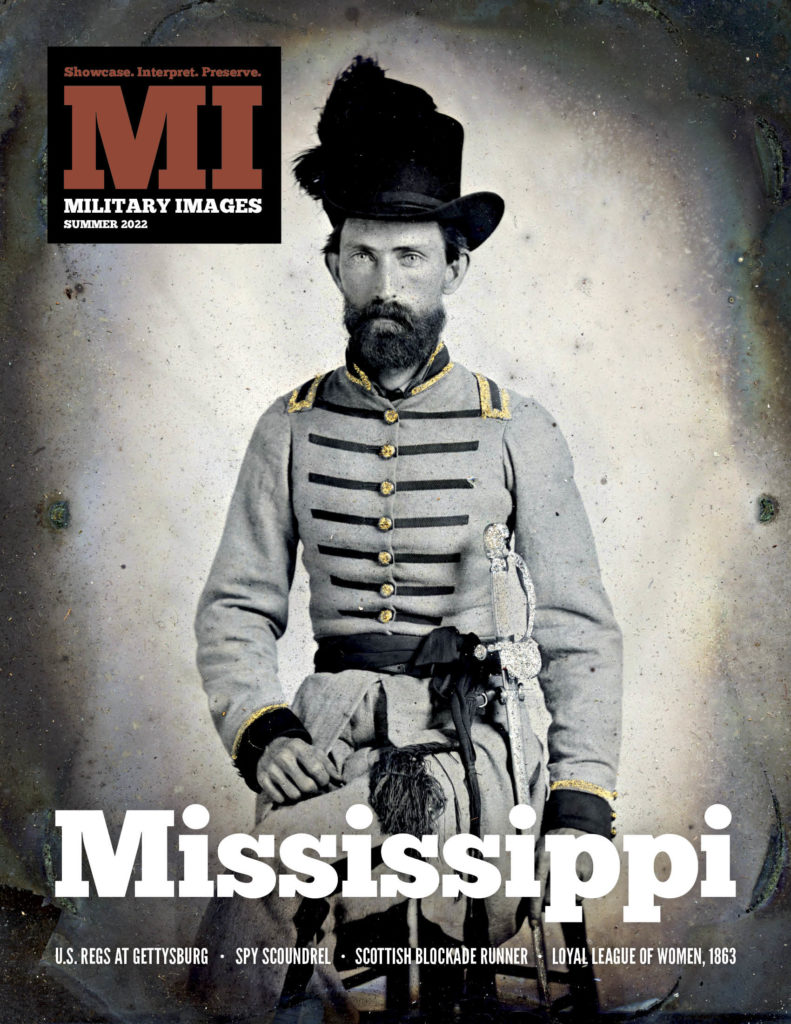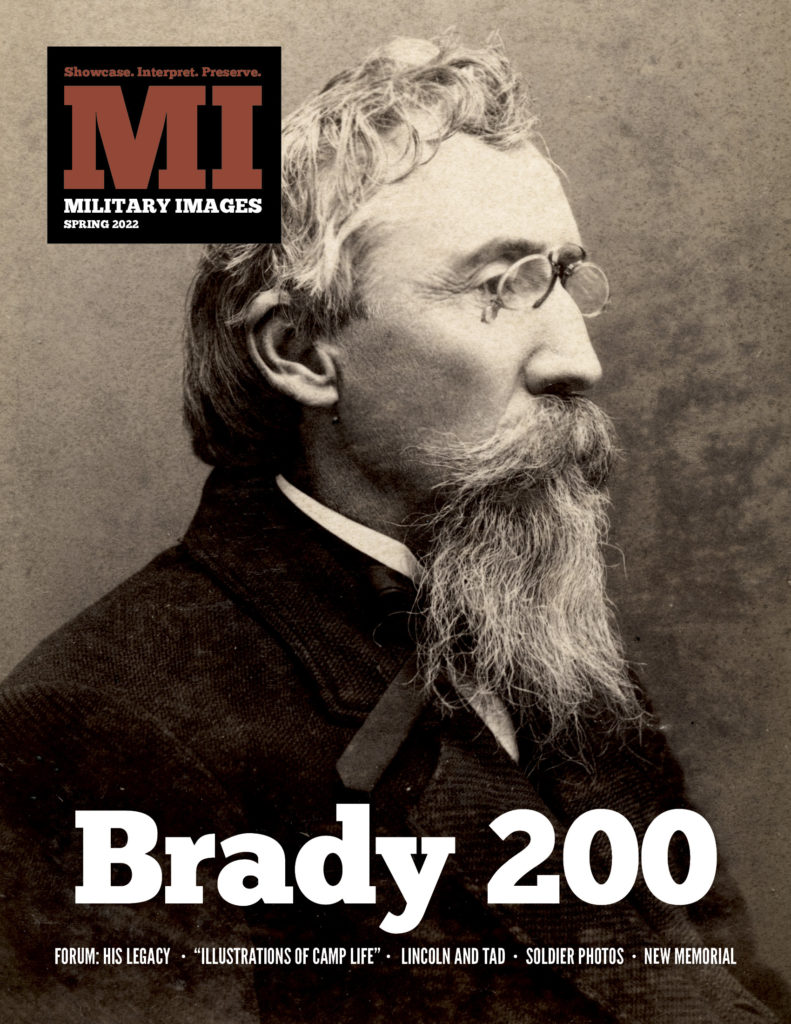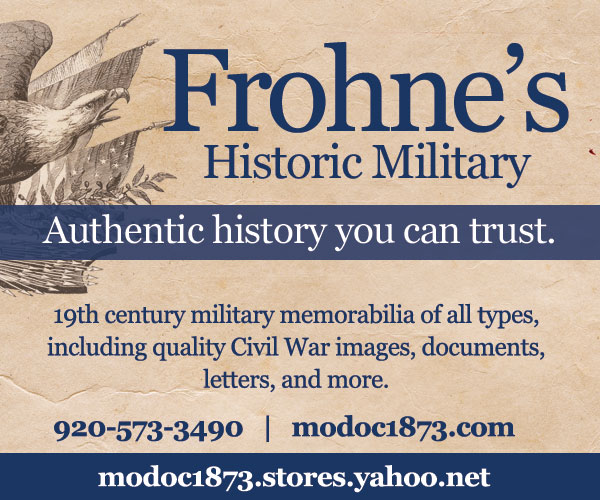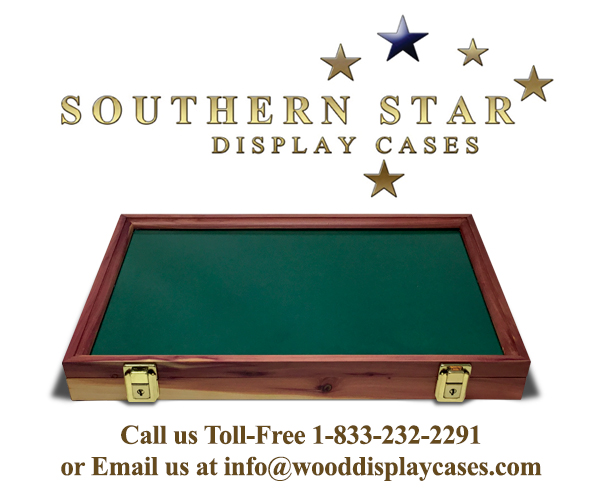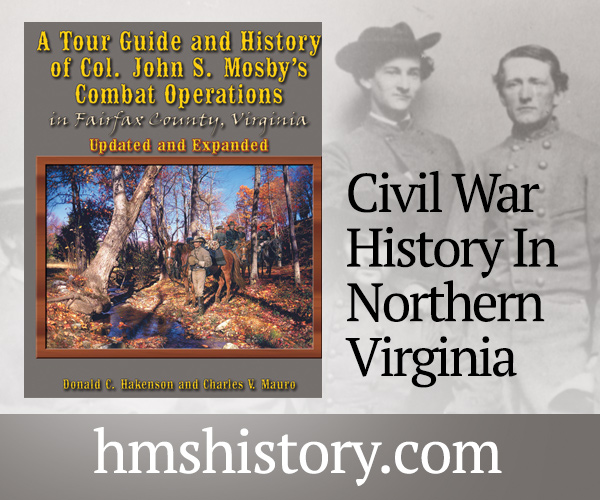A complete table of contents for the Winter 2024 issue of Military Images magazine, and information about how to purchase single issues and subscriptions.
Vol. XLII, No. 1
(80 pages)
Print edition: Visit our store to check availability
Digital edition: Visit JSTOR.org to purchase
Subscribe or renew your subscription
Explore the MI Archives:
Browse | Advanced search | Tutorial
Inside
Cover image
An ambrotype from the History Center of Mobile, Ala, pictures Raphael Semmes, circa 1854.
Table of Contents (p. 1)
Editor’s Desk (p. 2)
An update about the status of Herb Peck Jr.’s stolen collection from Bruce Jackson, the Peck Family agent and spokesperson.
Mail Call (pp. 3-4)
Feedback includes praise for the story about Herb Peck Jr.’s stolen collection.
Military Anthropologist (p. 4)
Since 1979, we’ve published 6,094 identified portraits of Union soldiers and sailors.
Passing in Review (pp. 6)
A book review of The Greatest Escape by Douglas Miller, published by Lyons Press.
Photo Sleuth by Kurt Luther (pp. 8-10)
A unusual backdrop painting of a broken cannon wheel with the name CULLY’s on it leads to South Carolina and the 33rd U.S. Colored Infantry.
Antebellum Warriors (p. 12)
A man dressed in civilian clothes wears military cross-belts consistent in style with Mexican War volunteers.
Most Hallowed Ground (p. 14)
John Lincoln Clem—Johnny Clem—is well known to students of the Civil War. An 1864 carte de visite portrait him includes an interview printed on the back.
The Honored Few (p. 16)
Brigadier General Alexander Shaler received the Medal of Honor for gallantry at the Second Battle of Fredericksburg for his charge at Marye’s Heights.
The Citizenry (p. 18)
On the back of a carte de visite portrait of an unidentified woman is a list of all the places this image traveled during the war—25 stops from Rhode Island to Georgia.
Semmes: An iconography of Rear Admiral Raphael Semmes, C.S. Navy by Cliff Krainik (pp. 20-34)
Feared by the North and beloved by the South as a commercial raider, labeled a pirate in the press, and twice a best-selling author, this is Semmes’ life in images.
The Likeness of Amos Humiston by Mark H. Dunkelman and Megan Kelley (pp. 36-39)
Two keepers of the history of Amos Humiston of the 154th New York Infantry and the children of the battlefield of Gettysburg are their perspectives.
First in War, First in Blood: Benjamin Franklin Kelley, West Virginia’s first military commander by Richard A. Wolfe (pp. 40-49)
Union Brig. Gen. Benjamin F. Kelley is remembered for his 1861 victory and his 1865 capture by partisan rangers. Here’s what happened in between.
Blessed Martyr, Vile Traitor: John Augustine Washington III, Mount Vernon’s last family owner and aide to Gen. Robert E. Lee by Ronald S. Coddington(pp. 52-62)
Forced with expensive upkeep and dwindling revenue, John A. Washington III sold Mount Vernon just before the Civil War and went on to join the Confederate army.
Material Culture by Mark Elrod (p. 64)
A look at early U.S. Model 1855 Harpers Ferry Rifles carried by Charles Smedberg of the 7th New York National Guard, and brother William of the National Rifles.
Behind the Backdrop by Adam Ochs Fleischer (pp. 66-69)
A tintype of Pennsylvania photographer William Kunstman posed with his unique background that includes a real cannonball is part of his story.
Stragglers (p. 72)
Two portraits of identified Confederates, one from Texas and another from Tennessee.
Vignette: Episodes of the Civil War by Scott Valentine (p. 74)
Captain Francis R. Leeds raised a company that became part of the 28th Connecticut Infantry. Eager to fight but sick with typhoid, he died before seeing action.
The Last Shot (p. 80)
A carte de visite of a sergeant of the 108th U.S. Colored Infantry holding the Stars and Stripes.


